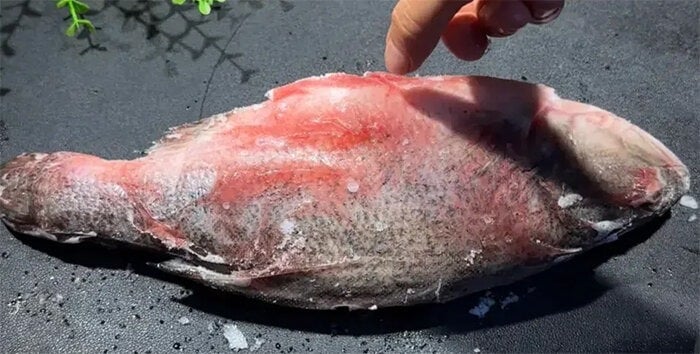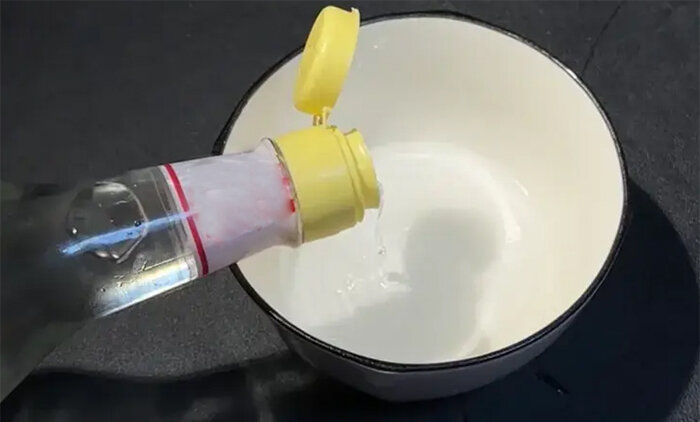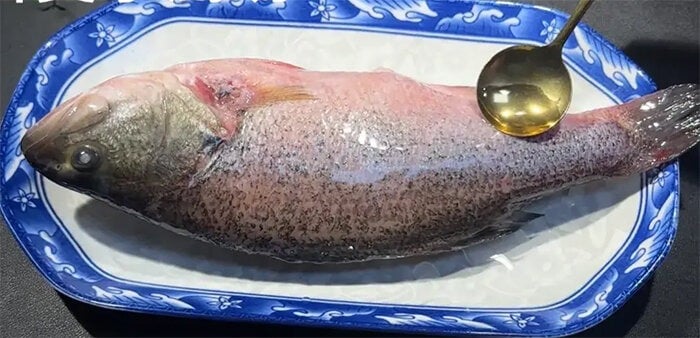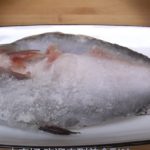Instead of soaking, you can defrost fish quickly while maintaining its freshness and nutritional value by using some readily available kitchen ingredients.
With limited time, homemakers often store a lot of food in the freezer for convenience. However, when it comes to defrosting, especially fish, the long wait and loss of freshness can be a concern for many.
Tips for Quick Fish Defrosting, Odor Removal, and Quality Preservation
To shorten the fish defrosting time while retaining its nutrients and flavor, many people soak the fish in water. However, this method can significantly reduce the nutritional value and sweetness of the fish. Instead, try the following defrosting tip to save time and ensure flavorful dishes:
Step 1: Rinse the fish under cold water
Place the fish under cold running water and let it run for about 10 seconds. The ice coating on the fish will quickly melt. At this point, the body of the fish will still be firm, but the tail and fins will have softened and separated from the ice.

Rinse the fish under cold running water for about 10 seconds.
Step 2: Prepare a mixture of vinegar and salt
In a small bowl, mix 20ml of white vinegar with 10gr of salt and add 150ml of warm water. Ensure the water temperature is around 35 degrees Celsius, neither too hot nor too cold. Stir the mixture well.

In a small bowl, mix 20ml of white vinegar, 10gr of salt, and 150ml of warm water.
Step 3: Apply the mixture to the fish
Place the fish on a large plate and use a spoon to spread the vinegar and salt mixture over the entire surface of the fish, making sure not to miss any spots. Let it sit for about 3 minutes. The fish flesh will gradually soften, but the middle part of the body may still be slightly firm; continue applying the mixture to the belly to soften the inside.
The combination of salt and vinegar not only helps to soften the fish but also eliminates any fishy odor. This method quickly defrosts the fish, usually within 5 minutes, and prepares it for the next cooking steps.

Place the fish on a large plate and apply the vinegar and salt mixture with a spoon.
Notes on Fish Defrosting
To ensure the freshness of the fish after defrosting, keep in mind the following guidelines:
Avoid using hot water to rinse the fish: Some people choose to rinse the fish with hot water to speed up the defrosting process, but this can partially cook the outside while the inside remains frozen, affecting the quality during cooking.
Do not eviscerate the fish before freezing: To maintain freshness, when buying fish, it is best to leave the guts intact, not gut, gill, or wash the inside before freezing. This way, the fish retains its flavor and does not deteriorate during storage.
Rinse the fish after defrosting: Once defrosted, thoroughly rinse the fish and remove the guts, gills, and fins. These areas are prone to bacterial growth and can cause food poisoning if not properly prepared.































